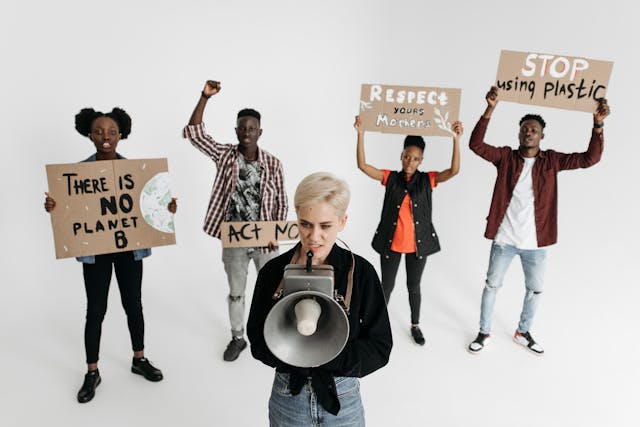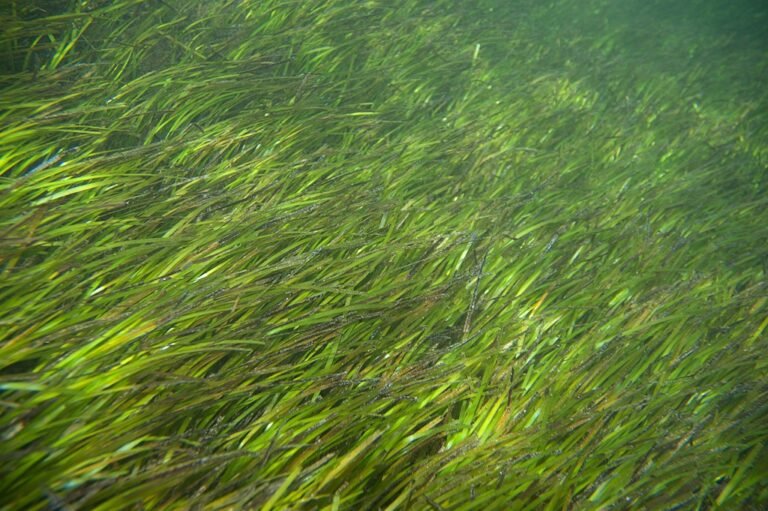10 Eco-Friendly Projects for Students: Taking Action for a Sustainable Future
If you’re a student who cares about the environment, you’re already ahead of the curve. But the question is, how do you turn that care into action? I remember when I first realised the importance of sustainability—sitting in a high school science class, learning about climate change. The urgency struck me: I wanted to do something, anything, to help. But where to begin?
That’s why I’ve written this guide. It’s a comprehensive look at 10 eco-friendly projects you can take on, whether in school or at home. You’ll find practical tips, backed by real-world stories and expert advice, to make sure you’re not only doing something good for the planet but also learning and growing along the way. Each of these projects is designed to be engaging, manageable, and impactful. Plus, you’ll build valuable skills that will help you in your academic and personal life.

In This Article
- Why Should Students Care About Sustainability?
- 1. Organise Classroom Clean-ups: A Simple Start with Big Impact
- 2. Launch a School-Wide Recycling Program: Turn Waste into Resources
- 3. Start a School Garden: Grow Your Own Food and Biodiversity
- 4. Create a Composting System: Turn Waste into Nutrients
- 5. Run a “Green Competition”: Gamify Sustainability
- 6. Advocate for Energy Conservation: Monitor and Reduce Energy Use
- 7. Organise a Tree-Planting Campaign: Rebuild the Planet One Tree at a Time
- 8. Hold an Eco-Fair: Educate and Inspire Others
- 9. Start a Water Conservation Campaign: Protect Our Most Precious Resource
- 10. Create a Zero-Waste Challenge: Reduce, Reuse, and Recycle
- Conclusion
Why Should Students Care About Sustainability?
As a student, you have a unique power to influence others. You’re in an environment where ideas spread quickly, and your actions can have a ripple effect. Imagine setting a trend for recycling in your school or creating a green competition that gets your entire class involved. Small actions can lead to big change.
Studies show that students who engage in eco-friendly activities are more likely to pursue careers in environmental fields. For instance, a study from Stanford University found that students who participated in school-wide sustainability programs developed a lifelong sense of responsibility toward the environment.
So, let’s dive into 10 actionable, eco-friendly projects you can start today. These projects don’t just make a difference—they’re fun, educational, and can be done with friends or classmates, making sustainability a part of your daily life.
1. Organise Classroom Clean-ups: A Simple Start with Big Impact
The easiest way to kickstart your sustainability journey is by organising regular clean-ups in your classroom or around your school. This project can be the gateway to bigger actions, but even on its own, it helps reduce waste and create a cleaner, healthier environment.
Personal Story: I remember back in middle school when a few friends and I decided to take ownership of our messy classroom. We gathered after school once a week to clean, sort recyclables, and get rid of clutter. Soon, more classmates joined in, and our initiative caught the attention of teachers. By the end of the school year, we had reduced our classroom waste by nearly 50%, and the practice spread to other classrooms.
How to Get Started:
- Set up a cleaning schedule and involve your peers. You can take turns, making the workload manageable.
- Place clearly labelled recycling bins for paper, plastic, and glass in your classroom. This makes it easy for students to sort their waste.
- Work with your school’s janitorial staff to ensure that recyclables are properly disposed of and collected.
Expert Tip: According to a report from the Environmental Protection Agency (EPA), regular classroom clean-ups can reduce waste by up to 40% if students take responsibility for sorting and disposing of their trash properly.
2. Launch a School-Wide Recycling Program: Turn Waste into Resources
Once you’ve mastered the art of cleaning your classroom, why not take it a step further by launching a school-wide recycling initiative? Recycling is one of the easiest and most impactful ways to reduce your school’s carbon footprint.
Personal Story: At my high school, we launched a recycling drive to encourage students to bring their paper, plastic bottles, and aluminium cans to designated collection bins. We were amazed by the results. In just one month, we collected over 200 pounds of recyclables that would have otherwise ended up in a landfill.
Steps to Follow:
- Start by identifying what materials can be recycled at your school. Common items include paper, plastics, and aluminium cans.
- Set up recycling stations throughout the school in high-traffic areas, such as hallways and cafeterias.
- Educate your peers through posters, announcements, or even an assembly on the importance of recycling and how it works.
Data Speaks: According to the U.S. EPA, recycling just one ton of paper can save 17 trees, 7,000 gallons of water, and 4,000 kilowatts of energy—enough to power the average home for six months.
Learn more: Sustainable Water Management Practices
3. Start a School Garden: Grow Your Own Food and Biodiversity
If you’re ready to roll up your sleeves and get a little dirty, a school garden is an excellent project that teaches the principles of sustainability, healthy eating, and teamwork. Plus, there’s nothing quite like watching something you’ve planted grow!
Personal Story: When I was a senior, a few friends and I started a vegetable garden behind our school. We planted tomatoes, lettuce, and herbs, and after a few months, we were able to harvest enough to donate to a local food bank. The experience taught us patience, responsibility, and how much effort goes into growing food sustainably.
Steps to Get Started:
- Find a space at your school where you can start your garden. You’ll need a sunny spot with good soil or raised beds.
- Research what kinds of plants grow well in your climate. Easy starter plants include tomatoes, lettuce, and herbs like basil or mint.
- Use organic gardening practices, such as composting and avoiding chemical pesticides, to maintain the health of your plants.
Expert Insight: “School gardens foster a sense of responsibility and a connection to nature,” says Clara Adams, an agricultural educator. “They also teach students about the importance of biodiversity and the role that healthy ecosystems play in sustaining human life.”
4. Create a Composting System: Turn Waste into Nutrients
Speaking of gardening, composting is another powerful way to reduce waste and contribute to a healthier planet. A classroom composting system turns organic waste—like food scraps and paper towels—into nutrient-rich soil, which can then be used for gardening.
Expert Insight: “Composting diverts organic waste from landfills, where it would otherwise release methane, a potent greenhouse gas,” explains Dr. Emily Cartwright, an environmental scientist. “Instead, composting converts waste into valuable nutrients for plants.”
Steps to Create a Composting System:
- Set up a compost bin in your classroom or school garden. You can either build one yourself or purchase one from a garden store.
- Educate your classmates about what can and can’t be composted. Acceptable items include fruit and vegetable scraps, coffee grounds, and eggshells. Avoid composting meat, dairy, or oily foods.
- Use the compost to enrich the soil in your school garden or donate it to a community garden.
Bonus Tip: Encourage teachers to incorporate composting into their lesson plans. It’s a great way to teach students about the natural cycle of decomposition and the role of microorganisms in breaking down organic matter.
5. Run a “Green Competition”: Gamify Sustainability
Students love a good challenge, so why not organise a “green competition” to get everyone involved in eco-friendly practices? This could be a contest to see which class can recycle the most, reduce energy consumption, or come up with the best ideas for making the school more sustainable.
Personal Story: In my sophomore year, we organised a recycling competition between different grades. The winning grade got a pizza party (with compostable plates, of course!), and the competition sparked a lot of excitement around sustainability. By the end of the month, we had collected more recyclables than the school had seen in years.
Steps to Organise a Green Competition:
- Pick a theme for your competition. It could be a recycling challenge, an energy-saving competition, or even a contest to come up with the best sustainability idea.
- Set clear rules and a timeline for the competition. Make sure students know how to participate and what’s at stake.
- Offer eco-friendly prizes, such as reusable water bottles, solar-powered gadgets, or even a field trip to a local recycling centre.
Expert Insight: According to the National Environmental Education Foundation (NEEF), students who participate in green competitions are more likely to develop sustainable habits that last a lifetime. Competitions also foster a sense of community and collaboration, both key components of successful environmental initiatives.
6. Advocate for Energy Conservation: Monitor and Reduce Energy Use
Reducing your school’s energy consumption is one of the most impactful ways to lower its carbon footprint. And the best part? It’s easier than you think. Simple actions like turning off lights, using energy-efficient appliances, and monitoring energy use can make a big difference.
Personal Story: In my senior year, we installed energy meters in several classrooms to monitor electricity usage. We were shocked to see how much energy was being wasted during lunch breaks and after school hours when lights and computers were left on. By the end of the year, our energy-saving efforts had reduced the school’s electricity bill by 10%.
Steps to Promote Energy Conservation:
- Start by conducting an energy audit of your school. Identify areas where energy is being wasted, such as lights left on in empty rooms or inefficient appliances.
- Work with your school administration to implement energy-saving measures, such as installing energy-efficient light bulbs or setting computers to automatically power down when not in use.
- Educate your classmates about the importance of energy conservation through presentations, posters, or social media campaigns.
Expert Insight: A report by the International Energy Agency (IEA) found that schools that actively monitor and reduce their energy consumption can lower their carbon emissions by up to 20%. It’s a win for both the environment and the school’s budget.
Learn more: Why Buying Antiques Is Good for the Environment
7. Organise a Tree-Planting Campaign: Rebuild the Planet One Tree at a Time
Trees are essential to the health of our planet. They absorb carbon dioxide, produce oxygen, and provide habitats for countless species. Organising a tree-planting campaign at your school is a hands-on way to contribute to the fight against climate change.
Personal Story: One of the most rewarding experiences I’ve had was participating in a tree-planting event with my local community. We planted over 100 trees in a single day, and a few years later, I was able to visit the site and see how much they had grown. It was a tangible reminder of the long-term impact of our actions.
Steps to Organise a Tree-Planting Campaign:
- Partner with local environmental organisations or nurseries to source tree saplings. Many organisations are willing to donate trees for school projects.
- Choose a planting site on your school grounds or in a nearby park. Make sure to select tree species that are native to your area for the best chance of survival.
- Gather a group of volunteers and make a day of it! Planting trees is a fun and rewarding experience that brings people together.
Expert Insight: According to a study by the Arbor Day Foundation, planting just one tree can absorb up to 48 pounds of carbon dioxide per year. Over its lifetime, that tree can remove tons of carbon from the atmosphere, making tree planting one of the most effective tools in the fight against climate change.
8. Hold an Eco-Fair: Educate and Inspire Others
If you want to take your environmental activism to the next level, consider organising an eco-fair at your school. This event can showcase different sustainability projects, invite guest speakers, and provide hands-on activities for students and community members to learn about eco-friendly practices.
Personal Story: During my junior year, we hosted an eco-fair at my high school. We invited local environmental organisations, set up booths with information on recycling and energy conservation, and even had a solar-powered smoothie stand. The event was a huge success, and it inspired many students to get involved in sustainability efforts.
Steps to Organise an Eco-Fair:
- Plan the event well in advance and gather a team of volunteers to help with logistics.
- Reach out to local environmental organisations, businesses, and experts to participate in the event. They can set up booths, give presentations, or lead hands-on workshops.
- Promote the eco-fair through social media, school announcements, and posters to ensure a good turnout.
Expert Insight: According to research from the University of Michigan, eco-fairs and similar events are highly effective at raising awareness and changing behaviours related to sustainability. They provide a platform for knowledge-sharing and inspire participants to take concrete actions in their own lives.
9. Start a Water Conservation Campaign: Protect Our Most Precious Resource
Water is one of the most vital resources on Earth, yet it’s often wasted without a second thought. A water conservation campaign at your school can raise awareness about the importance of saving water and provide practical tips on how to reduce water usage.
Personal Story: I’ll never forget the time my school had to temporarily shut down due to a severe drought in our region. It was a wake-up call for many of us, as we realised how much water we had been wasting. After that, we launched a water conservation campaign that involved installing low-flow faucets and toilets, as well as educating students about turning off taps when not in use.
Steps to Start a Water Conservation Campaign:
- Begin by conducting a water audit of your school. Identify areas where water is being wasted, such as leaks, inefficient faucets, or over-watered lawns.
- Work with your school administration to implement water-saving measures, such as fixing leaks or installing water-efficient appliances.
- Create posters or hold workshops to educate your peers about simple ways to conserve water, like taking shorter showers or using reusable water bottles.
Learn more: 13 Examples of Biodegradable and Non-Biodegradable Waste
Expert Insight: According to the World Wildlife Fund (WWF), simple water-saving actions can reduce a school’s water consumption by up to 30%. This not only conserves water but also reduces the energy required to pump, heat, and treat water.
10. Create a Zero-Waste Challenge: Reduce, Reuse, and Recycle
The goal of a zero-waste challenge is simple: produce as little waste as possible over a set period of time. This project challenges students to think creatively about how to reduce, reuse, and recycle materials, while also highlighting the importance of responsible consumption.
Personal Story: In my last year of high school, our environmental club decided to take on a zero-waste challenge. For one month, we tried to produce as little trash as possible, focusing on reusing items and recycling everything we could. It was a tough challenge, but it opened our eyes to just how much waste we produce daily—and how much of it can be avoided.
Steps to Run a Zero-Waste Challenge:
- Set a clear timeframe for the challenge, such as one week or one month. Encourage students to track their waste production and share tips for reducing it.
- Provide reusable alternatives, such as water bottles, lunch containers, and shopping bags, to help students avoid single-use items.
- Hold a reflection session at the end of the challenge to discuss what students learned and how they can continue to reduce waste in their everyday lives.
Expert Insight: A study by the Ellen MacArthur Foundation found that shifting to a zero-waste mindset can significantly reduce the amount of plastic waste entering landfills and oceans. Even small changes, such as using reusable bags or containers, can make a big difference over time.
Conclusion
The projects outlined here are more than just eco-friendly activities—they’re stepping stones toward a more sustainable future. Whether you start with a small recycling drive or take on a bigger initiative like tree planting, every action counts. By engaging in these projects, you’re not only making a positive impact on the environment but also gaining skills and knowledge that will last a lifetime.
Remember, sustainability is a journey, not a destination. Every small step you take brings us closer to a greener, healthier planet. So go ahead—start that garden, plant those trees, or launch that recycling campaign. You have the power to make a difference, and the world is waiting for your next move.







